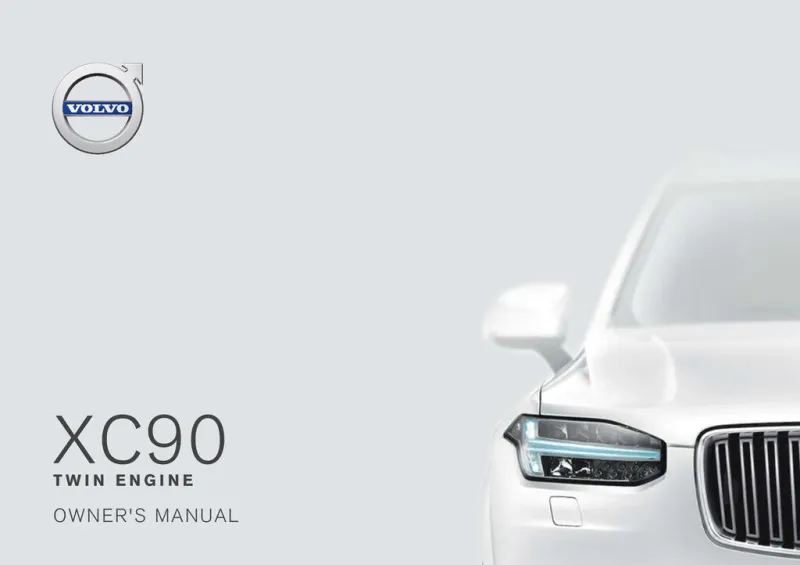2019 Volvo Xc90 Twin Engine Owner's Manual

Table of Contents
2019 Volvo Xc90 Twin Engine Overview
Introduction
The 2019 Volvo XC90 Twin Engine stands as a testament to the Swedish automaker's commitment to luxury, safety, and environmental consciousness. This hybrid SUV elegantly combines a robust performance with exceptional efficiency, making it a compelling choice for discerning drivers who value both power and sustainability. With its Scandinavian design aesthetics and cutting-edge technology, the XC90 seamlessly marries form and function, ensuring every journey is a pleasurable experience.
Powertrains
The 2019 XC90 Twin Engine is powered by a remarkable hybrid powertrain that comprises a supercharged and turbocharged four-cylinder gasoline engine coupled with an electric motor. This combination delivers a robust total output of 400 horsepower, providing exhilarating acceleration and dynamic handling. The innovative T8 Twin Engine technology not only enhances performance but also offers impressive fuel economy, affirming Volvo's commitment to eco-friendly driving. The plug-in hybrid capabilities allow for electric-only driving, making short commutes efficient and whisper-quiet.
Trims
The XC90 is available in several trims, including the Momentum, R-Design, and Inscription, each tailored to meet varying preferences and needs. The Momentum trim offers an impressive array of luxury features, while the R-Design adds a sporty flair with unique design elements and enhanced performance features. The Inscription trim elevates comfort and sophistication with premium materials and advanced technological enhancements, ensuring that every drive is as luxurious as it is powerful.
Features
The 2019 XC90 Twin Engine is loaded with features designed to enhance comfort, safety, and convenience. Standard features include a high-resolution touchscreen infotainment system, premium audio, and advanced safety technology such as Pilot Assist, Lane Keeping Aid, and adaptive cruise control. The interior is crafted with high-quality materials, providing a serene atmosphere for driver and passengers alike. With ample cargo space and versatile seating arrangements, this SUV is designed for both daily commuting and weekend adventures.
Owner's Manual
The owner's manual for the 2019 Volvo XC90 Twin Engine is an essential resource for understanding the vehicle's features, systems, and functionalities. It provides detailed instructions on operating the car's infotainment system, maintenance schedules, safety features, and hybrid technology. This comprehensive guide ensures that owners can fully maximize their experience with the XC90, bolstering their driving confidence and enhancing vehicle longevity.
User manual download
The Volvo Xc90 Twin Engine owner manual for the 2019 model year is to be found in PDF downloadable format on this page. The owner manual for the model year 2019 is free and in English, but the repair manuals are usually not easy to get and may cost more.
Manual Questions
Fill the form below and someone will help you!
